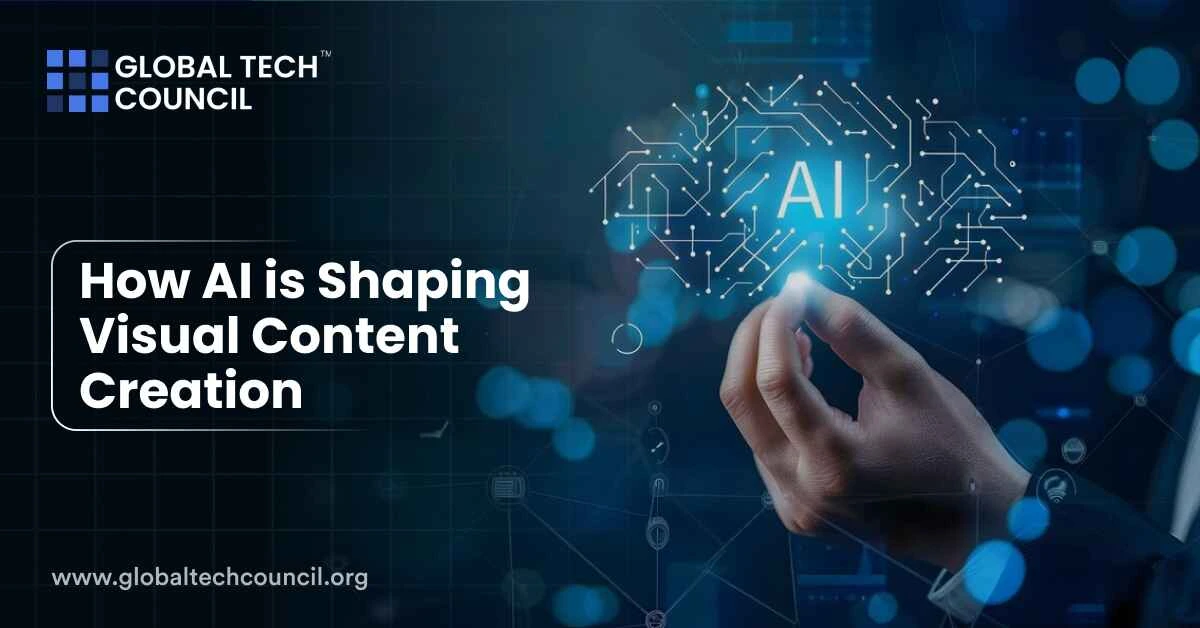
Artificial intelligence (AI) is dramatically transforming the way we approach visual content creation. From graphic design to video production, AI-powered tools are making the process quicker, more efficient, and allowing for a wider range of creative possibilities. The influence of AI in this space continues to grow, with new innovations enhancing both the ease of creation and the quality of the output.
How AI is Changing Visual Content Creation
Initially, AI tools were designed to take care of repetitive tasks like resizing images or applying basic filters. However, AI’s capabilities have expanded significantly. Now, it is able to generate visuals, edit video footage, and even create animations just from simple text prompts. These advancements mean that AI can now help in much more complex aspects of creative work.
Take Adobe Firefly, for instance. This AI tool allows users to create high-quality visuals with minimal effort. It enhances productivity by automating several design tasks but still leaves room for human creativity to thrive. Canva’s Magic Studio is another example, combining AI for image creation, social media design, and personalized content, making these tools accessible for both professionals and beginners alike.
AI Tools That Are Changing Design Workflows
Several AI-driven tools are becoming integral to design and content creation.
- Canva’s Magic Studio: Canva’s Magic Studio is a great tool for designing social media posts, presentations, and other custom content. It uses AI to help generate brand-consistent designs without needing deep technical expertise. The AI-powered features have been widely adopted, with millions of users interacting with the platform globally.
- Adobe Firefly: This AI-powered tool helps create and enhance images by supporting various tasks, from background generation to photo touch-ups. By integrating Firefly with Adobe Creative Cloud, designers can combine the power of traditional editing with the new capabilities of AI.
These AI tools are making high-quality design accessible to a broader audience, allowing even those with little design experience to create professional-level content.
AI in Video Production
AI’s influence on video production has been equally profound. New AI tools are now capable of helping creators conceptualize, edit, and finalize videos much faster.
- Runway’s Gen-3 Alpha: This AI tool allows users to generate short video clips from simple text or image inputs. It is especially helpful in the early stages of video production, providing a creative starting point without overshadowing the artistic direction.
- Captions’ Lipdub 2.0: This tool uses AI to synchronize lip movements in different languages, simplifying the dubbing process for international audiences. It helps video creators focus on storytelling, while AI takes care of the technical localization aspects.
By automating video editing and production tasks, AI tools like these are reducing production times and streamlining workflows.
Generative AI: Unlocking New Creative Possibilities
Generative AI is enabling creators to explore visual styles and techniques that would have previously been costly or time-consuming. AI platforms like Artlist help produce surreal, attention-grabbing visuals that stand out in today’s crowded digital space. By merging technology with artistic expression, generative AI is allowing creators to break the boundaries of traditional content creation, encouraging innovation.
This advancement in AI gives creators the flexibility to experiment with unique styles and effects, making it easier to produce content that resonates with audiences on a deeper level.To know more about AI and its impact on visual content, consider getting expert-led AI certifications by the Global Tech Council.
Personalization in Visual Content
Personalized content is now at the heart of many content strategies. AI can analyze user preferences to create visuals that are specifically tailored to different audiences. This means that businesses can engage more effectively with their target market.
- AI-powered tools in Adobe and Canva offer design suggestions based on users’ past work, helping creators maintain consistency across projects.
- Captions’ Lipdub 2.0 allows creators to produce content in multiple languages, making it easier to reach global audiences.
Personalization features like these allow businesses to connect with their viewers more effectively while improving the overall efficiency of their creative process.
Ethical Concerns and Challenges
Although AI has provided countless benefits to content creation, it has raised concerns, especially in the creative industry. Issues such as copyright infringement and the potential loss of human creativity are important discussions. To address these concerns, companies like Adobe are ensuring their AI tools use licensed data and respect intellectual property rights.
Ethical guidelines are being implemented to ensure that AI’s role in content creation is used responsibly. This includes considering how AI is applied in creative fields, making sure it complements rather than replaces human work, and ensuring transparency in how AI-generated content is produced.
The Future of AI in Visual Content Creation
AI has fundamentally changed how visual content is created, making it faster, more accessible, and customizable. Platforms like Canva’s Magic Studio, Adobe Firefly, and Runway’s Gen-3 Alpha are bringing professional-level design and video production capabilities to people around the world. While AI has streamlined many creative processes, it’s essential to continue focusing on ethical considerations to ensure that these tools are used responsibly.
As AI continues to evolve, its impact on visual content creation will only grow. Creators and businesses that embrace these technologies can unlock new possibilities, while still maintaining the human creativity that drives engaging and impactful content. In the future, AI will continue to enhance the creative process, enabling individuals to produce visually compelling and personalized content more efficiently than ever before.
Conclusion
AI is revolutionizing the world of visual content creation. From generating stunning visuals to streamlining video production, AI tools have made it easier for creators to produce high-quality content quickly and affordably. However, as AI becomes an even bigger part of the creative process, it’s important to consider the ethical implications and ensure that human creativity remains at the core of visual storytelling. Embracing AI with care and responsibility will help creators push the boundaries of their craft while maintaining their originality and artistic integrity.